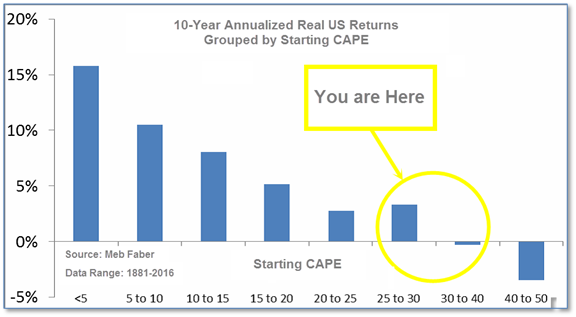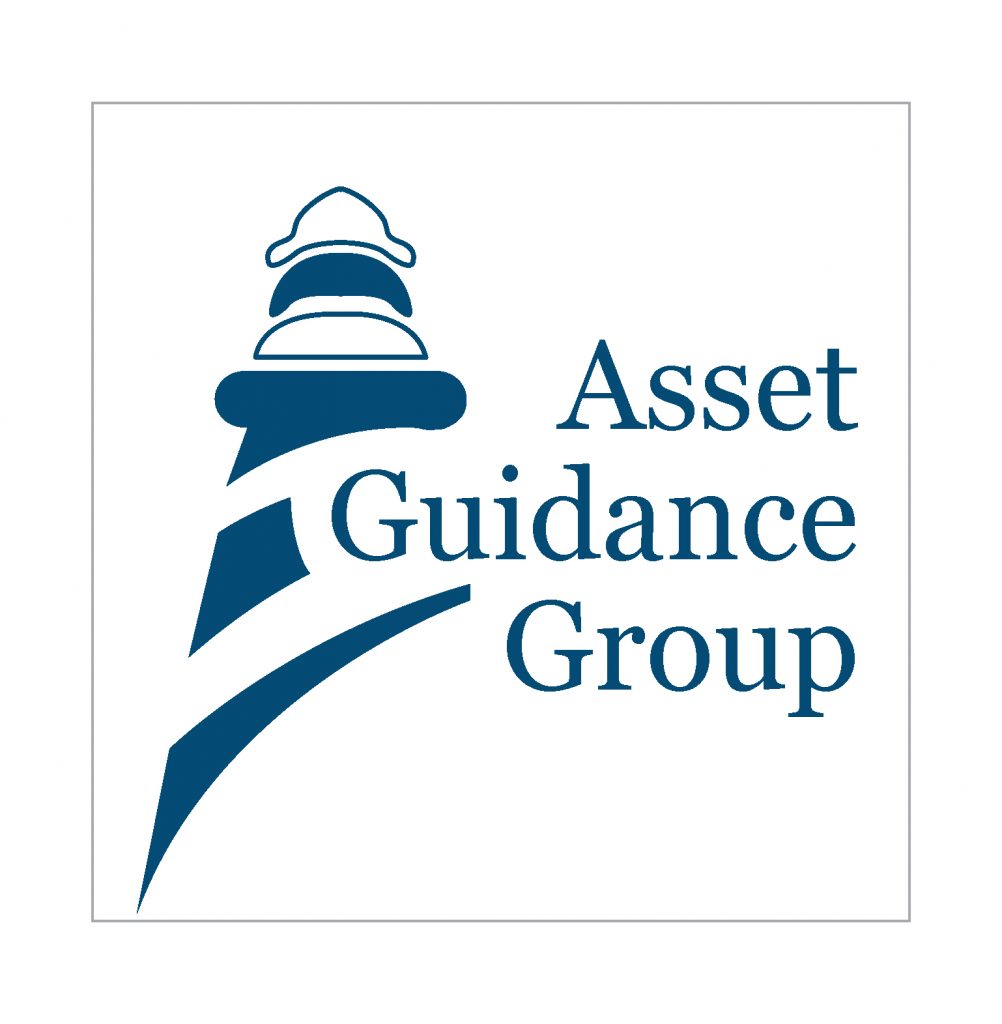The Asset Guidance Group Outlook for the Week Ahead Starting Sep 19, 2023
The Asset Guidance Group Monday Outlook for the Week Ahead Starting Monday Sep 19, 2023 Click Chart to Enlarge Here’s The Asset Guidance Group Outlook
In the minutes from the last FOMC meeting, several members expressed concern with the pace of rate hikes given the “highly uncertain global economic and financial
environment.” This week, earnings season heats up, which should provide a glimpse into how corporations and consumers are holding up and if inflation is starting to relent.
Goldman Sachs, Netflix, Tesla, Proctor & Gamble, and American Express are some of the key companies scheduled to report. Also in the U.S., regional manufacturing surveys from New York and Philadelphia are expected to remain in contraction territory but may reveal softening price pressures. Housing starts and existing home sales for September will be released as mortgage rates have surged to 20-year highs. The international calendar kicks off with China’s Q3 GDP, expected to have expanded to 3.6% growth YoY, while retail sales are forecasted to slip from the prior month. The UK will announce September CPI amid the turmoil of the new government’s fiscal plans, and retail sales on Friday. Other events of interest include Canadian CPI and Eurozone
economic sentiment information. ECB President Lagarde will speak at the
IMF/World Bank event ahead of the central bank’s October 27 meeting. [1]
Gold and silver pulled back with the weakness in the equities markets. Gold retreated -3.5% to $1648.90 per ounce, while Silver plunged -10.8% to $18.07. West Texas Intermediate crude retreated -7.6% to $85.61 per barrel. The industrial metal copper, viewed by some analysts as a barometer of world economic health due to its wide variety of uses, finished the week up 1.1%.
The number of Americans filing first time unemployment benefits rose last week, but remains near historic lows. The Labor Department reported initial jobless claims rose by 9,000 to 228,000. Economists had forecast an increase to just 225,000. Claims have risen in three of the last four weeks. The latest reading was its highest level since August. Meanwhile, continuing claims, which counts the number of people already receiving benefits rose by 3,000 to 1.368 million.
Confidence among the nation’s small-business owners increased slightly last month but remained depressed as inflation continues being a huge problem for businesses. The National Federation of Independent Business (NFIB), a small-business lobbying group, reported its Optimism Index rose 0.3 point to 92.1 in September. Economists had expected a reading of 91.8. September marks a third consecutive month of gains for the index, which remains low according to historical standards. The overall improvement in confidence was mainly driven by better prospects for sales, although other components also posted increases. In its release, NFIB Chief Economist Bill Dunkelberg said, “Inflation and worker shortages continue to be the hardest challenges facing small business owners.” Still, “even with these challenges, owners are still seeking opportunities to grow their business in the current period,” he said.
Prices at the wholesale level rose for the first time in three months—however the increase was double the Wall Street forecast. The Bureau of Labor Statistics (BLS) reported prices at the Producer level (PPI) rose 0.4% in September, signaling inflation continues to rise despite the current interventions by the Federal Reserve. Economists had expected just a 0.2% gain. Over the past year, the increase in wholesale prices pulled back slightly to 8.5% from 8.7%. Core PPI, which strips out the volatile food and energy segments, increased 0.4% last month. The reading of Core PPI was also larger than expected. The increase in these so-called core prices over the past year was flat at 5.6%. Chief U.S. economist Rubeela Farooqi of High Frequency Economics stated, “While they are off their peaks, producer costs are still rising at a fast pace.”
At the consumer level, prices rose again in September suggesting that inflation will persist at least through the end of the year. The BLS reported its Consumer Price Index (CPI) increased 0.4% last month bringing the annual rate of inflation to 8.2%. Economists had forecast a 0.3% increase. Notably, in the report, the cost of groceries surged again—up 13% over the past year. The last time food prices rose that fast was in 1979. However, what initially rocked markets was a sharp jump in the “core” rate of inflation in the CPI (ex-food and energy). Core CPI jumped 0.6%, 0.2% higher than estimates. The increase in the core rate over the past year climbed to a new cycle high of 6.6%–its biggest gain in 40 years. It is widely thought that the Fed views the core rate as a more accurate measure of future inflation trends. With inflation still running hot, most analysts expect at least a 75 bps rate increase at the Fed’s next meeting. Indeed, Seema Shah, chief global strategist at Principal Asset Management wrote in a research note, “After today’s inflation report, there can’t be anyone left in the market who believes the Fed can raise rates by anything less than 75 basis points at the November meeting.”
Sales at the nation’s retailers were flat last month as high inflation and rising interest rates continued to take spending power out of the pockets of consumers. Backing out inflation means that fewer “things” were purchased by consumers than a year ago. Chief economist Gregory Daco of EY Parthenon summed up the report stating simply, “Consumers are spending more dollars, but they’re getting fewer items.” [2]
Following World War 2, the United States was a global industrial behemoth with more than 40% of all private sector jobs in manufacturing. Today, that number is less than 10%. However, the latest jobs report shows “made in America” is at least attempting to make a comeback. September’s report showed the U.S. now has the largest manufacturing workforce since the financial crisis of 2008, with almost 13 million workers employed in manufacturing. With fragile supply chains and the skyrocketing cost of international shipping, domestic production is now becoming more and more attractive and even economical. (Chart from chartr.co). [3]
While three central bank interest rate decisions await this week, global investors will
focus squarely on Wednesday’s FOMC meeting. Amid last week’s rumors of a 100bps
hike, traders are pricing in 75bps and indications that further substantial increases
are coming. Yes, annual inflation did decrease from 8.5% to 8.3% last month, but it
remains miles away from the Fed’s intended 2% target. While supply chain disinflation
is finally emerging, the U.S. labor market is still far too tight to bring demand growth
and thus inflationary pressures down quickly enough. After delaying its decision by a week, the Bank of England is expected to raise by 50bps but may consider more after prime minister Truss announced a supportive package to cap household energy bills. The Bank of Japan may be considering a policy shift after conducting a rate check last week, which is widely interpreted as a potential currency intervention to prop up the sinking yen. But experts see raising the cap on 10-year government bond yields more likely than the BOJ raising short-term rates, as inflation still hovers near just 2.5%. The other main event this week is Friday’s global PMIs, with updates on supply and demand conditions for the manufacturing and services sectors amid recession concerns. Other releases of note include U.S. housing starts and existing home sales, Canada’s August CPI, and EU consumer confidence. [5]
Last week was much more volatile than the S&P500 Index’s (SPX) 1.5% loss
indicated. The downtrend is still intact, with a new low and lower high, but there were bullish technical signals offering hope of a potential turn. Thursday’s price action was incredible, opening 2% lower, then closing over 2%
higher. That candle engulfed all three of the preceding days and offered bullish divergences on both the MACD and RSI. The index hit resistance
at the 20-day EMA and its downsloping trend line, but reversed on Friday. Both of
those will need to be broken before any uptrend can begin. Click on the Chart to Enlarge. [6]
Sources: [1] tdainstitutional.com; [2] [3] [4] Asset Guidance Group analysis, www.stockcharts.com; All index- and returns-data from Yahoo Finance; news from Reuters, Barron’s, Wall St. Journal, Bloomberg.com, ft.com, guggenheimpartners.com, zerohedge.com, ritholtz.com, markit.com, financialpost.com, Eurostat,0020Statistics Canada, Yahoo! Finance, stocksandnews.com, marketwatch.com, wantchinatimes.com, BBC, 361capital.com, pensionpartners.com, cnbc.com, FactSet; Chart from Bloomberg.com; [5] [6] tdainstitutional.com;
Past performance is no guarantee of future results. Inherent in any investment is the potential for loss.




5 Questions to Ask About Medicare Downloadhttps://assetguidancegroup.com/5-questions-to-ask-about-medicare/
The Asset Guidance Group Monday Outlook for the Week Ahead Starting Monday Sep 19, 2023 Click Chart to Enlarge Here’s The Asset Guidance Group Outlook
The Asset Guidance Group Monday Outlook for the Week Ahead Starting Monday Sep 11, 2023 Click Chart to Enlarge Here’s The Asset Guidance Group Outlook
The Asset Guidance Group Monday Outlook for the Week Ahead Starting Monday Aug 28, 2023 Click Chart to Enlarge Here’s The Asset Guidance Group Outlook
The Asset Guidance Group Monday Outlook for the Week Ahead Starting Monday Aug 21, 2023 Click Chart to Enlarge Here’s The Asset Guidance Group Outlook
The Asset Guidance Group Monday Outlook for the Week Ahead Starting Monday Aug 14, 2023 Click Chart to Enlarge Here’s The Asset Guidance Group Outlook
The Asset Guidance Group Monday Outlook for the Week Ahead Starting Monday Aug 7, 2023 <figure> <a href=”https://assetguidancegroup.com/wp-content/uploads/2023/08/230807.ChtOWk.png”> <img width=”800″ height=”470″ src=”https://assetguidancegroup.com/wp-content/uploads/2023/08/230807.ChtOWk-1024×602.png” alt=”Find True Fiduciary

Illuminating.Charting.Navigating